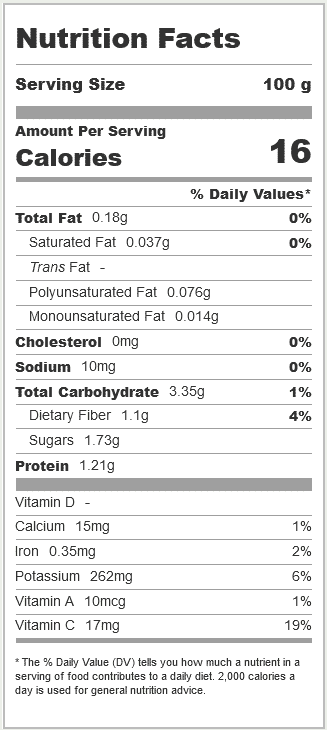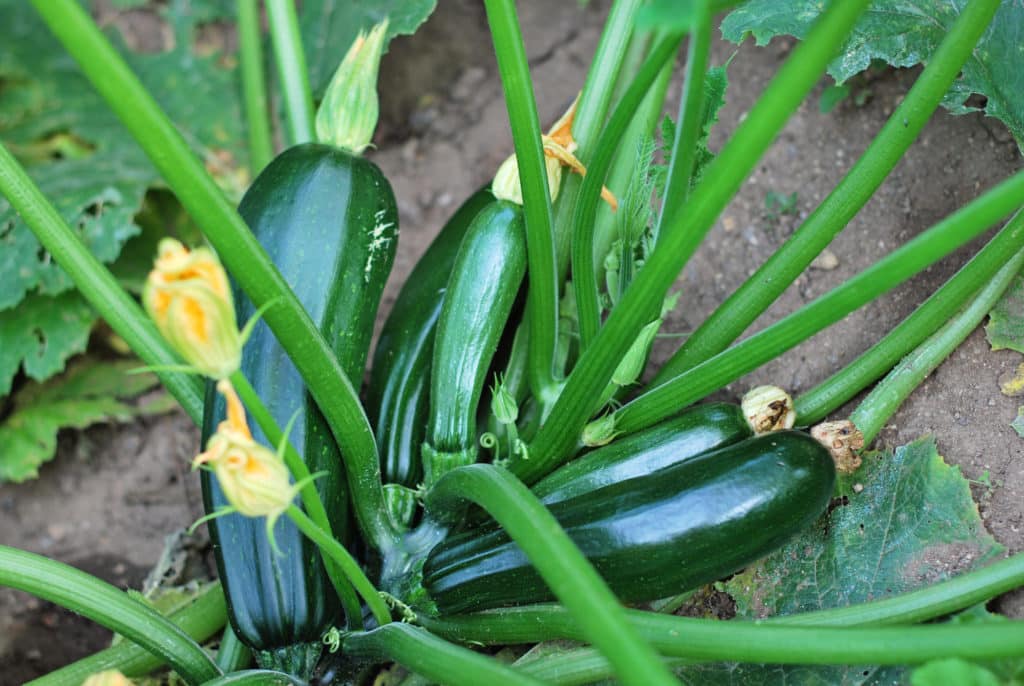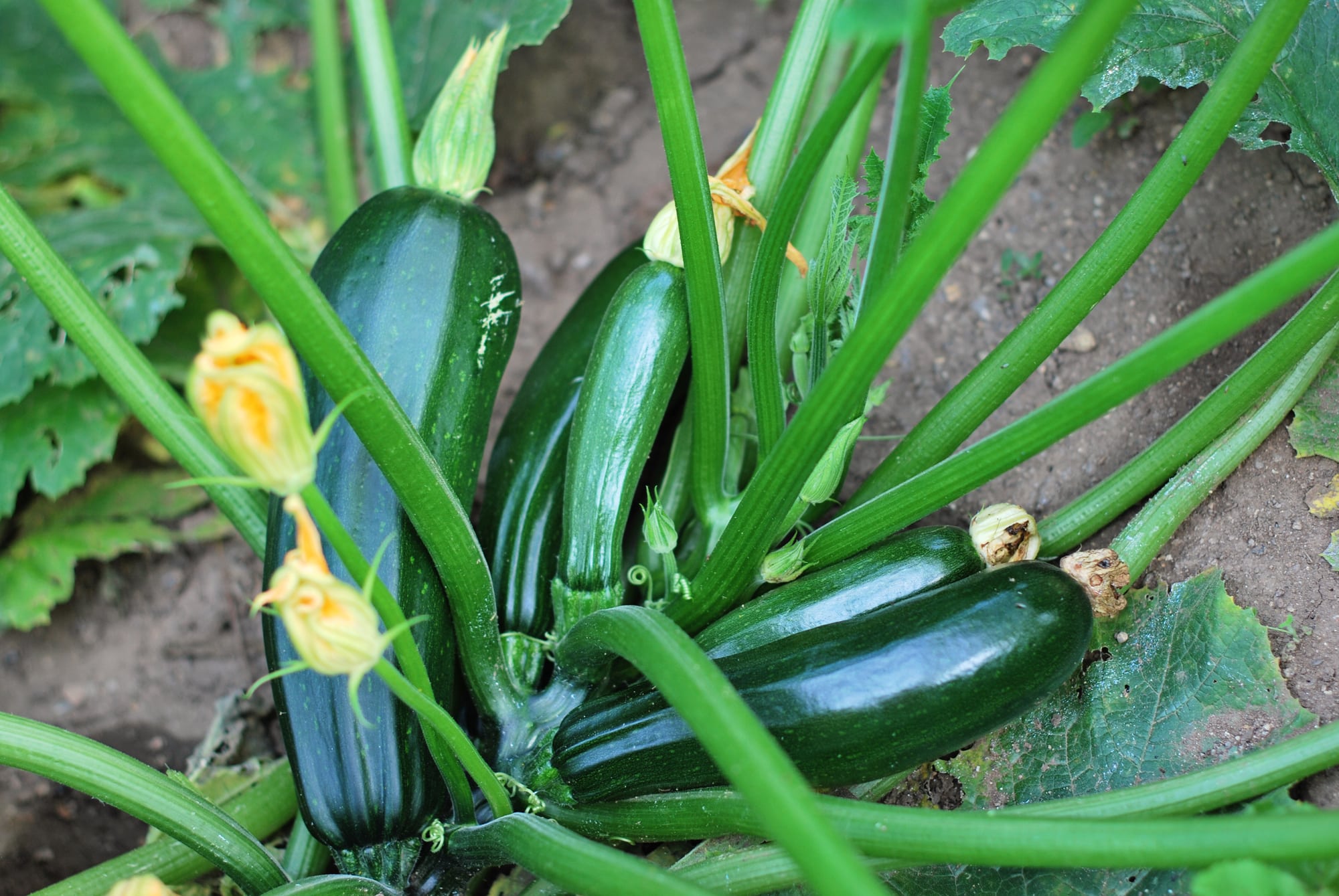A hamster doesn’t just occupy a place in your house; he occupies a place in your heart. It is pure joy to look at your hamster run around in his cage, do all those stupid things he normally does, and sleep so innocently without a worry in the world.
But while all these are joyful moments without a doubt, the moment of utmost joy is when you take your hamster out of his cage and hold him in your hand, and he looks at you with those small dark eyes… that’s the moment your heart truly melts.
But having a hamster as a pet is not just pure fun; it is a great responsibility too. You must decide what to feed your hamster, when to feed him, and how much to feed. For many pet owners, it might be stressful to make these decisions. So, as part of an ongoing blog post series on the hamster diet, I created this zucchini guide for hamsters. I answer the question, “Can hamsters eat zucchini?” and go in-depth into how much zucchini to feed, when to feed, and what to watch out for, while feeding zucchini to your hamster.
So, continue reading.
- Zucchini
- Nutritional content in a zucchini
- Different types of hamsters vs. zucchini
- Things to watch out for
- What if my hamster doesn't like zucchini?
- Can hamsters have zucchini? Is zucchini good for hamsters?
- Summary
Zucchini
A fruit or a vegetable?
If you are like me, I am sure that you would have wondered at least once if zucchini is a fruit or vegetable. But guess what, you’re not alone. And it is not your mistake either. Because zucchini is a type of summer squash, and in botany, all squashes are considered fruits. And just like other members of the squash family, like cucumbers and pumpkins, zucchinis are considered berries too (Source: My recipes).
But when it comes to cooking, it is considered a vegetable. That’s because we often classify food items as fruits or vegetables based on their taste and not based on science. For anything to be considered a fruit, it should at least be a little bit sweet. So, it is no wonder that zucchini, which has an earthy flavor, is considered a vegetable.
Origin
Squash got its name from the Narragansett Native American word askutasquash, meaning ‘eaten raw or uncooked’ (Source: Library of Congress).
Squash seeds have been found in archaeological excavations in Mexico, dating back to somewhere between 9,000 and 4,000 years ago (Source: Kitchen project). So, it is highly probable that the indigenous people started using squash as a food item by at least 5,000 BC (Source: Food news). Over centuries, its use became widespread, and by the time the European explorers came to the Americas, just like corn and beans, squash had already become a staple food for the indigenous people there.
Columbus and the other explorers brought squash seeds back to Europe. As a result, their cultivation began in Europe. But the zucchini, as we know it today, emerged only in the late 19th century, near the Italian city called Milan. Today, several types of zucchini are grown all around the world.
Nutritional content in a zucchini
Zucchini has a lot of important vitamins and minerals that your hamster’s body needs.
The nutritional content in 100g of zucchini is listed below. Please note that this table is only for your understanding. The exact amount of nutrients in 100g of zucchini that you purchase from a shop or supermarket might actually vary.

(Source: Fat secret)
Different types of hamsters vs. zucchini
Can Chinese dwarf hamsters eat zucchini?
Chinese dwarf hamsters are tiny animals. So, they cannot eat a lot of zucchini. At most, they can eat a very tiny piece of zucchini every week.
Can Campbell dwarf hamsters eat zucchini?
Campbell dwarf hamsters are similar in size to Chinese dwarf hamsters. So, they can be fed a tiny piece of zucchini every week.
Can Russian dwarf hamsters eat zucchini?
Russian dwarf hamsters are comparable in size to other dwarf hamsters. Hence, they can eat a tiny piece of zucchini every week.
Can Roborovski hamsters eat zucchini?
Roborovski hamsters are smaller than other dwarf hamsters. But when compared with other pet dwarf hamsters, they are more active. So, their digestive systems can handle sugars much better than other dwarf hamsters, and they are not prone to diabetes either. So, they can eat more zucchini than dwarf hamsters, about a teaspoon of it every 2 weeks. But you should not serve it all in one sitting. You should cut the teaspoon-sized zucchini further into several smaller pieces and distribute them throughout the fortnight.
Can Syrian hamsters eat zucchini?
Syrian hamsters are the largest of all hamsters (Source: Just hamsters). So, you can feed them a teaspoon-sized zucchini every week. But just as in the case of Robovski hamsters, this should be spread through the week.
Things to watch out for
Can hamsters eat zucchini skin?
Zucchinis’ skins are healthy. So, hamsters can eat them. Moreover, zucchini’s skin is hard. So, it gives your hamster something to gnaw at and sharpen his ever-growing teeth.
But a word of caution – Zucchini skin can have pesticides. So, buy organic food for your hamster. If not, thoroughly wash the zucchini properly with warm water before feeding the skin so that any pesticide sticking to the skin gets rinsed off.
Can hamsters eat zucchini seeds?
Yes, hamsters can eat zucchini seeds. But make sure to cut each seed into several smaller pieces to avoid your hamster choking on it.
Can hamsters eat zucchini leaves?
Zucchini’s leaves are also healthy for your furry friend. But zucchini leaves contain a substance called Cucurbitacin (Source: Wikipedia). It is a biochemical compound produced by some members of the squash family. It acts as a taste deterrent and protects the plant against herbivores. If taken in large amounts, it can become toxic to body cells.
So, zucchini leaves, in particular, should only be fed in moderation to your hamster. Feeding more than a leaf at a time could become dangerous (Source: Tiny pet tales).
Can hamsters eat zucchini flowers?
Just like the vegetable itself, the flower is also healthy. After all, the flower becomes a vegetable. So, it contains the nutrients that the zucchini vegetable contains. However, most farmers spray chemical compounds on flowers to prevent them from being eaten by insects or to keep them fresh. So, if you want to feed your hamster, opt for organically grown zucchini flowers.
Can hamsters eat raw zucchini?
Absolutely. They contain various nutrients that your hamster can benefit from. Yellow and green zucchinis are both good.
However, before feeding the zucchini to your hamster, take a small piece and taste it. If it tastes bitter, dispose of it immediately. Bitter zucchini can be poisonous.
Can hamsters eat bitter zucchini?
Definitely, not. Studies show that eating bitter vegetables (zucchini is one of them) which contain Cucurbitacin has caused respiratory-cardiac failure in rats and mice (Source: Vegetable Research & Innovation board). Hamsters, being rodents like rats and mice, could suffer the same fate. Bitter zucchinis are not toxic just for pets but also for humans.
If you eat even just 3g of bitter zucchini, it can cause nausea, stomach cramps, and diarrhea. In rare cases, it can even kill you. So, if you find a zucchini to be bitter, you should throw it away immediately.
Can hamsters eat cooked zucchini?
Cooked zucchini is not as healthy as fresh zucchini (raw zucchini). Most of the nutrients in raw zucchini, like Vitamin A, Vitamin C, potassium, calcium, and sodium, are reduced during cooking (Source: Healthline). So, the nutritional content in zucchini is reduced considerably upon cooking. Moreover, cooked zucchini can cause digestive problems in hamsters.
So, serve zucchini raw to your hamster.
Remove uneaten pieces of zucchini
Due to their small size, hamsters are sensitive to spoilt food. So, if your hamster doesn’t finish the pieces of zucchini you fed him within 24 hours, remove them.
Combine zucchini with other food items
Zucchini is, without a doubt, highly nutritious for your little pet. But your hamster needs a balanced diet to stay healthy. So, combine zucchini with fresh fruits, pellets, and hay.
Always consult a vet
Zucchinis are generally good for hamsters. But nobody knows for sure how your hamster’s body would react to zucchinis. So, if you are concerned that it might affect your hamster’s health, try feeding a small piece of zucchini to your hamster in the presence of a veterinary doctor during a regular check-up.
What if my hamster doesn’t like zucchini?
As healthy and tasty as zucchini is, there is a chance that your hamster might not like it. If that’s the case, what should you do? Should you try to force your hamster to eat it?
No, if your hamster doesn’t like the taste of zucchini on the first try, don’t feed it again.
Can hamsters have zucchini? Is zucchini good for hamsters?
Yes, definitely. Hamsters can eat most fresh vegetables. They can eat zucchini too. In fact, hamsters can have zucchini much more often than other vegetables. That’s how healthy zucchini is.
Zucchini is good for your hamster because it has several important vitamins and minerals. Your hamster’s body needs these nutrients in order to function properly. Adding zucchini to your hamster’s diet not only brings variety to your hamster’s diet. It also makes the diet healthier, thereby increasing your hamster’s life expectancy.
Wondering what the health benefits and risks of feeding zucchini to your hamster are? Keep reading, and find out.
Health benefits of zucchini
1. Zucchini has Vitamin C, which aids in the development, growth, and repair of body tissues and keeps your hamster strong.
2. It has sufficient Vitamin A. Vitamin A improves your hamster’s vision and boosts his immune system.
3. Zucchini contains a lot of potassium. Potassium helps combat hypertension and reduces heart rate. So, zucchini is a nice treat for hamsters, which like to play and run around most of the time.
4. It is also rich in antioxidants. Antioxidants provide a free electron to dangerous substances called free radicals.
Free radicals are created in our (as well as hamsters’) bodies because of harmful phenomena such as air pollution. They are highly unstable chemical compounds that need an electron to become stable. Normally they steal this electron from body cells or DNA, thereby creating irreparable harm to the body. But antioxidants prevent this from happening by providing an electron to stabilize and neutralize these free radicals.
Most fresh vegetables and fruits contain antioxidants and hence, play an important role in keeping your hamster healthy. Zucchini, in particular, contains Carotenoids like lutein, zeaxanthin, and beta-carotene, which are beneficial to skin, eyes, and heart. They also fight certain types of cancers.
5. Zucchini has considerable water content. This reduces the risk of constipation by making stools softer and easier to pass.
6. Zucchini, like many fresh vegetables, contains both soluble and insoluble fiber. Insoluble fiber doesn’t dissolve in water. But it attracts water to the stool, making the stool softer and helping it move through the gut smoothly. This reduces the constipation risk in your hamster further.
7. The soluble fiber in zucchini helps keep blood sugar levels in control, thereby reducing the risk of diabetes (Source: Healthline).
8. Its nutrition profile (high water content, fiber content, and few calories) can make your hamster feel full faster. Thus, it can prevent your hamster from getting fat.
9. Zucchini contains calcium. Calcium aids in the development of bones and teeth. Since hamsters are rodents whose teeth grow constantly, calcium is important for them. Calcium is even more relevant for pregnant and young hamsters whose bones need to grow and expand.
Side effects of zucchini
Too much of anything is always a bad thing. Zucchini is no exception to that. You should always feed zucchini in moderation to your hamster. If not, it might cause the following problems:
1. Zucchini contains insoluble fiber, remember? And the insoluble fiber it contains is cellulose, which makes up the walls of plant cells. Cellulose can be found in all parts of zucchinis. This is what makes them harder to chew when compared to many other vegetables. While insoluble fiber is good for the bowel movement of your hamster, too much of it can cause digestive problems like gas, bloating, and diarrhea (Source: Eat this, not that).
2. The calcium in zucchini might aid in the development and growth of teeth and bones in your hamster. But you should remember that too much calcium can cause bladder stones. If that happens, in some cases, surgical removal might be the only option.
3. Zucchinis have also been found to cause some allergic reactions like abdominal pain and skin rashes in humans. Rarely, an allergy to zucchini has also been observed in dogs (Source: Pet consider). However, nothing of that sort has been observed in hamsters. But if you’re still concerned that your hamster might develop an allergy to zucchini, you should observe the changes in stool and skin tone of your hamster for a few days after feeding zucchini.
4. Eating too much zucchini can cause obesity. For hamsters, which like to run around and play most of the time, obesity might be a deal-breaker. It could reduce their life expectancy considerably.
5. A balanced diet is ideal for your hamster. Ideally, a hamster’s diet should consist of fresh food, hay, hamster pellets, etc. Feeding too much zucchini to your hamster can make him feel full, leaving no place for other food items. Thus, it can prevent your furry friend from having a balanced diet that has all the nutrients he needs. This may lead to nutritional deficiency and reduce the life expectancy of your hamster.
Summary
Zucchini is botanically a fruit, but when it comes to cooking, it is considered a vegetable. It has a lot of vitamins and minerals. It contains:
- Vitamin C, which helps your hamster grow and become strong.
- Vitamin A, which boosts the vision and the immune system of your hamster.
- Antioxidants, which slow down the effects of aging and protect the skin, eyes, and heart of your hamster.
- Insoluble fiber and high water content, which make bowel movement smoother and prevent constipation.
Some points to note:
- Serve zucchini raw. Cooked zucchini is less nutritious and might even be dangerous for your hamster.
- If you serve the zucchini skin or flower, wash it thoroughly with warm water to remove any traces of pesticides sticking to it.
- If you serve zucchini seeds, cut them into very small pieces to avoid choking.
- Remove any left-over pieces of zucchini in 24 hours.
- If zucchini tastes bitter, do not feed it to your hamster. Throw it away immediately because it might be poisonous not just to your hamster but to you as well.
- Always feed zucchini in moderation.



